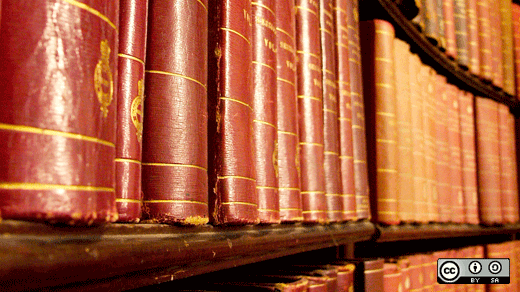OSI Approves Cryptographic Autonomy License and CERN Open Hardware Licenses
Get to know the new OSI-approved Cryptographic Autonomy License and CERN open hardware licenses.
 Pam ChestekAs the steward of the Open Source Defintion, the Open Source Initiative has been designating licenses as "open source" for over 20 years. These licenses are the foundation of the open source software ecosystem, ensuring that everyone can use, improve, and share software. When a license is approved, it is because the OSI believes that the license fosters collaboration and sharing for the benefit of everyone who participates in the ecosystem.
Pam ChestekAs the steward of the Open Source Defintion, the Open Source Initiative has been designating licenses as "open source" for over 20 years. These licenses are the foundation of the open source software ecosystem, ensuring that everyone can use, improve, and share software. When a license is approved, it is because the OSI believes that the license fosters collaboration and sharing for the benefit of everyone who participates in the ecosystem.
The world has changed over the past 20 years, with software now used in new and even unimaginable ways. The OSI has seen that the familiar open source licenses are not always well-suited for these new situations. But license stewards have stepped up, submitting several new licenses for more expansive uses. The OSI was challenged to evaluate whether these new concepts in licensing would continue to advance sharing and collaboration and merit being referred to as "open source" licenses, ultimately approving some new special purpose licenses.
Four new licenses
First is the Cryptographic Autonomy License. This license is designed for distributed cryptographic applications. The challenge of this use case was that the existing open source licenses wouldn't assure openness because it would be possible for one peer to impair the functioning of the network if there was no obligation to also share data with the other peers. So, in addition to being a strong copyleft license, the CAL also includes an obligation to provide third parties the permissions and materials needed to independently use and modify the software without that third party having a loss of data or capability.
As more and more uses arise for peer-to-peer sharing using a cryptographic structure, it wouldn't be surprising if more developers found themselves in need of a legal tool like the CAL. The community on License-Discuss and License-Review, OSI's two mailing lists where proposed new open source licenses are discussed, asked many questions about this license. We hope that the resulting license is clear and easy to understand and that other open source practitioners will find it useful.

Next, the European Organization for Nuclear Research, CERN, submitted the CERN Open Hardware Licence (OHL) family of licenses for consideration. All three of its licenses are primarily intended for open hardware, a field of open access that is similar to open source software but with its own challenges and nuances. The line between hardware and software has blurred considerably, so applying separate hardware and software licenses has become more and more difficult. CERN undertook crafting a license that would ensure freedom for both hardware and software.
The OSI probably would not have considered adding an open hardware license to its list of open source licenses back when it started, but the world has changed. So while the wording in the CERN licenses encompasses hardware concepts, it also meets all the qualifications to be approved by the OSI as an open source software license.
The suite of CERN Open Hardware licenses includes a permissive license, a weak reciprocal license, and a strong reciprocal license. Most recently, the license has been adopted by an international research project that is building simple, easily replicable ventilators to use with COVID-19 patients.
Learn more
The CAL and CERN OHL licenses are special-purpose, and the OSI does not recommend their use outside the fields for which they were designed. But the OSI is eager to see whether these licenses will work as intended, fostering robust open ecosystems in these newer computing arenas.
More information on the license approval process is available from the OSI.
About the author
Pam Chestek is a Board Member of the Open Source Initiative and the principal of Chestek Legal in Raleigh, North Carolina. She works with creative communities, giving practical legal advice on branding, marketing, and protecting and sharing content. Pam has authored several scholarly articles, has a legal blog at Property...[More...]
Attribution
This article was published in Opensource.com. It is republished by Open Health News under the terms of the Creative Commons Attribution-ShareAlike 4.0 International License (CC BY-SA 4.0). The original copy of the article can be found here.
- Tags:
- building simple replicable ventilators
- CERN licenses encompass hardware concepts
- CERN OHL
- copyleft license
- COVID-19 patients
- Cryptographic Autonomy License (CAL)
- distributed cryptographic applications
- European Organization for Nuclear Research (CERN)
- License-Discuss
- License-Review
- Open Access
- open ecosystems
- Open Hardware
- Open Hardware Licence (OHL)
- Open Source Defintion
- Open Source Initiative (OSI)
- open source license
- open source license fosters collaboration and sharing
- open source practitioners
- open source software
- open source software ecosystem
- Pam Chestek
- peer-to-peer sharing using a cryptographic structure
- permissive open source license
- strong reciprocal open source license
- suite of CERN Open Hardware licenses
- weak open source reciprocal license
- Login to post comments